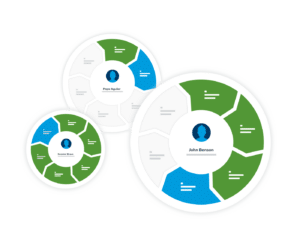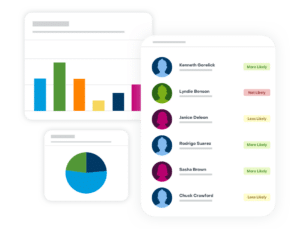5 Ways Companies Can Reverse the Great Customer Resignation
Optimizing customer engagement and experience is a key focus for any sales and marketing leader. Our recent survey shows that customers are leaving in droves—at a rate of nearly 1 in 2 in the US and 1 in 3 worldwide. It appears a Great Customer Resignation is upon us, but companies shouldn’t resign themselves that this can’t be reversed and resolved.
With the right technology and an engagement-driven mindset, companies can overcome the challenges of customer flight. In our 2022 CRM Impact Report, we speak to the path forward—how organizations can transform a state of churn concern into a nirvana of long-term customer retention. The key will be delivering consistent, personalized experiences that align with customer expectations—the high-definition customer experience their business needs and their customers crave.
This article explores the top five areas companies should focus on to transform the customer resignation challenge into a customer retention opportunity on a grand scale.
Customer Centricity
While most sales and marketing leaders know it’s easier to keep an existing customer than find a new one, retaining that customer can be surprisingly challenging when the experience doesn’t match a customer’s expectations. It’s important to remember that every customer interaction is a moment of truth, and their experience can turn sour at any moment for any number of reasons. Identifying the gaps between customer expectations and their actual experience is the key to understanding the potential for churn.

Organizations must develop a more customer-centric business philosophy and leverage technologies like CRM to help optimize and personalize customer engagement throughout the entire customer journey. This includes gathering customer engagement data points, identifying customer sentiment indicators, and tracking customer service performance in real time. In addition, deploying AI-driven predictive intelligence such as personalized recommendations, next-best actions, and relevant cross-sell opportunities and leveraging AI to identify customers at risk early based on predictive models. The more you know about your customers, the easier it is to create consistent, personalized sales, marketing, and service activity.
Capitalizing on Data to Fuel the Customer Experience
A primary challenge for many organizations is having an incomplete view of customer activity. Three-quarters of respondents in the survey say a unified view of sales, marketing, and service is critical to delivering an optimal customer experience—however, the lack of such a data infrastructure fuels a customer relationship crisis.
A shared CRM data platform that connects every stakeholder with a complete real-time customer view is the foundation for creating a solid customer experience. Data fuels the actionable insights that sales, marketing, and service teams need to act decisively at every critical touchpoint throughout the customer journey. Sales teams, for example, that can see what’s happening on the service front can better identify upsell and cross-sell opportunities and create more personalized communications with customers. A connected CRM system ensures no blind spots, no busy work, and no roadblocks.
It’s Time to Enhance Lead Qualification and Prioritization
Despite two decades of CRM evolution, the ability to generate qualified leads remains an elusive task for many organizations. 54% of respondents said that the sales leads generated by marketing are either poorly qualified or underqualified, and nearly one-third (27%) of sales leads are never followed up on.
Improving lead generation and conversion is a crucial reason many are looking to replace their old CRM systems. Marketing teams still struggle to define what good leads are and pass them successfully on to the sales organization. A unified CRM allows sales, marketing, and service teams to clearly define what good leads look like, helping to personalize outreach and add intelligence to lead qualification, deal tracking, opportunity management, and customer engagement.

Marketing has the greatest insight into how each customer engages the brand, such as what content is being downloaded, what type of events they’re attending, and where they’re falling off in the marketing funnel. Sales have keener insights into product and business-related needs that influence every deal. By better scoring account opportunities, tracking conversion rates, and sharing customer preference insights, sales and marketing can synchronize their strategy for generating and acting on the most valuable leads.
It’s Time to Remove the Silos and Improve Organizational Alignment
It’s challenging to orchestrate coordinated sales, marketing, and service activities. And it only gets more complicated when each group works from different datasets, playbooks, KPIs, and definitions of success. Our research revealed that almost two-thirds of sales and marketing leaders agree that sales and marketing misalignment prevents their organization from growing their business adequately. Some of the top reasons for this include: Incompatible KPIs or incentivized by different goals (72%), systems not integrated or different technology platforms (61%), and poor communication between teams (45%).
An integrated CRM platform ensures that the left hand knows what the right hand is doing, and the process starts before prospects enter the pipeline. Organizations must establish a common terminology or definition of each metric and jointly determine which KPIs have the most significant impact on the customer experience. In addition, companies must focus on valuable metrics such as retention rates and create and document an internal handoff process to ensure a seamless transition from marketing to sales, service, finance, and other vital customer-facing groups.
It’s Time to Let AI Augment the Customer Experience
Investments in artificial intelligence (AI) have increased during the pandemic. Not surprisingly, sales and marketing use cases have seen some of the highest adoption rates, as they can directly impact revenue. A large majority of respondents (86%) said their organization’s sales team uses AI to augment one or more business processes.
AI has moved beyond visionary to mainstream technology adoption. With more data available—especially from digital channels—AI can enable better customer experiences, personalized engagement, accurate predictions, and better decision-making. The wide range of AI usage and its critical impact on business transformation is likely why 91% say they expect to use AI technology to augment existing processes to increase over the next 24 months. The use cases for AI solutions with high adoption include automated emails (44%), account intelligence (40%), conversational AI (36%), lead conversion (33%), and opportunity close prediction (33%).

It’s Time to Let the Platform Transform the Great Customer Resignation
Technology is supposed to work for you, not the other way around. Our study shows that sales and marketing teams can stem the tide of customer churn and produce relevant customer experiences if they apply the right resources—and develop a highly customer-centric mindset. It starts with a CRM platform that connects all constituents with the same data, easily accessible and loaded with insights that help sellers and marketers give customers exactly what they want.
The future of customer experience is based on data-driven, predictive systems to understand better what your customers want and predict what they need. By leveraging the modern merits of an AI-powered platform, your CRM can finally work with you, not against you, eliminating blind spots, busy work, and roadblocks. It’s time to let the platform do the work.
This blog article was initially published in CXBuzz.



